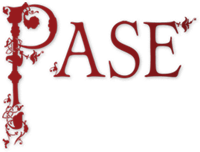Table of Contents
Top of page
Name
Summary
Distribution Map
Property List
Profile
Bibliography
Bottom of page
Megenlioba 2
Megenlioba ‘of Mellis’ (Suffolk), fl. 1066
Female
DWP
4 of 5
Name
Summary
Megenlioba 2 was a free woman who held 12 acres in north Suffolk TRE.Distribution map of property and lordships associated with this name in DB
List of property and lordships associated with this name in DB
Holder 1066
| Shire | Phil. ref. | Vill | DB Spelling | Holder 1066 | Lord 1066 | Tenant-in-Chief 1086 | 1086 Subtenant | Fiscal Value | 1066 Value | 1086 Value | Conf. | Show on Map |
|---|---|---|---|---|---|---|---|---|---|---|---|---|
| Suffolk | 35,7 | Mellis | Menleua | Megenlioba 'of Mellis' | Wulfwine, antecessor of Aubrey de Vere | Aubrey de Vere | Adelelm the man of Aubrey de Vere | 0.12 | 0.40 | 0.40 | C | Map |
| Totals | ||||||||||||
Profile
Megenlioba 2’s little holding was at Mellis in north Suffolk, on a ridge between tributary streams of the rivers Dove and Waveney. The place-name Mellis is first recorded in DB and is generally derived from Old English mylnas ‘the mills’ (e.g. Ekwall 1960: 321), although no mill is recorded among the small estates or holdings there then. Nor is there any clear indication of the large grazing common for which Mellis is famous in more recent times; indeed, the various DB entries suggest that the land was mainly given over to arable.Megenlioba’s holding was grouped with several others in Mellis and nearby in so far as the resources and value are concerned in DB, so it is not clear as to what proportion of the whole pertained to her holding. The entry does record separately the assessment of her 12 acres of land, however, not only because it was ‘free land’ (libera terra), implying that she had held it freehold, but also because at some time before the Conquest she had granted (concesserat) it to the abbey of Bury St Edmunds. It is not recorded in the abbey’s fief (or in FBB), but presumably the arrangement had been that she would continue to live on the land for her lifetime and it would thereafter pass to the abbey. If so, then the Conquest may well have disrupted these plans and DB records it among other lands in and around Mellis that were held by a subtenant of Aubrey de Vere (Aubrey 2) in 1086. This apparent appropriation could well have been given a veil of legitimacy on the grounds that Aubrey’s predecessor, Wulfwine 61, had been both Megenlioba’s commended lord and the holder of the soke of her land.
For a free woman with an apparently continental name such as Megenlioba to occur in pre-Conquest England was unusual but not exceptional, although it is rare to find one who appears to have been simply a moderately well-off peasant with no obvious connection to one of the king’s French courtiers (cf. Lewis 1995: 134-5). However, she was not the only person with a continental name to hold land at Mellis TRE, because Fulcard 2 also had holdings there and the largest of these included the local church. Given this unusual coincidence it is highly likely that Megenlioba and Fulcard were connected in some way, although the precise nature of that connection remains a matter of speculation.
This is the only instance of someone called Megenlioba or a similar name recorded in Domesday Book, or indeed from Anglo-Saxon England.
Bibliography
Ekwall 1960: E. Ekwall, The Concise Oxford Dictionary of English Place-Names, 4th edn (Oxford, 1960)
Lewis 1995: C. P. Lewis, ‘The French in England before the Norman Conquest’, Anglo-Norman Studies 17 (1995), pp. 134-5.
